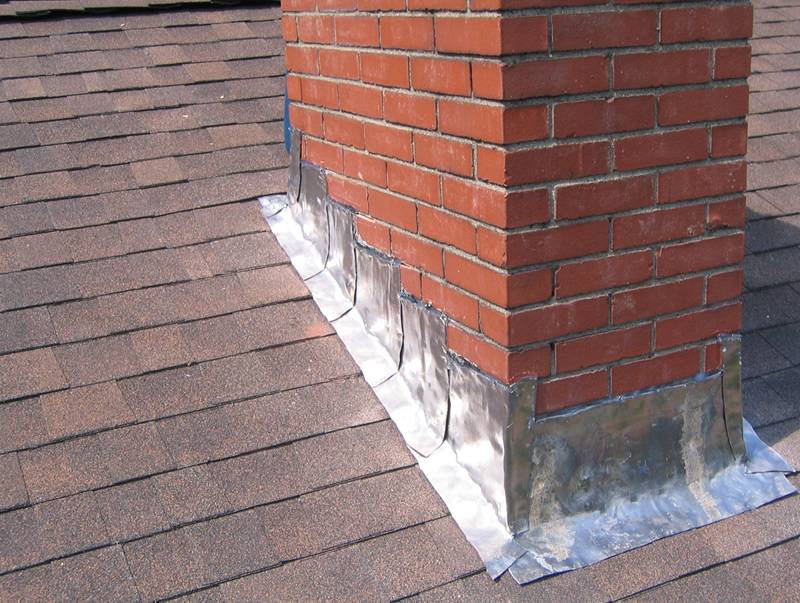
November 25, 2024
Common Chimney Flashing Problems and How to Fix Them
Chimney flashing is a critical component of your roof, designed to create a watertight seal between your chimney and roof surface. When it’s working properly, it prevents water from seeping into your home, protecting against leaks and structural damage. However, chimney flashing is prone to wear and tear over time, especially in areas with fluctuating weather conditions like St. Louis. Understanding the common problems with chimney flashing and how to fix them can save homeowners from costly repairs and water damage.
What is Chimney Flashing?
Chimney flashing consists of thin metal sheets—usually aluminum, copper, or galvanized steel—installed at the intersection of the chimney and roof. Its primary function is to direct water away from this vulnerable area, preventing leaks. Proper installation includes two main layers:
- Step Flashing: Installed under the shingles and against the chimney.
- Counter Flashing: Overlaps the step flashing and is embedded into the mortar joints of the chimney.
Despite its effectiveness, chimney flashing can develop issues over time, especially if not maintained or installed correctly.
Common Chimney Flashing Problems
1. Corrosion or Rust
Metal flashing, particularly if made from galvanized steel, is prone to rust or corrosion over time due to prolonged exposure to moisture. Once rust sets in, the flashing becomes weaker and may develop holes, allowing water to penetrate.
Fix:
Replace the corroded flashing with a more durable material like aluminum or copper. A roofing professional can also apply a protective coating to extend the lifespan of the new flashing.
2. Improper Installation
Poor installation is one of the leading causes of chimney flashing problems. If the flashing wasn’t sealed correctly or doesn’t overlap properly, water can seep through gaps and cracks, leading to leaks.
Fix:
Have a professional inspect the flashing and re-install it if necessary. Proper installation involves overlapping the step and counter flashing, sealing all edges with roofing cement, and embedding the counter flashing securely into the chimney mortar.
3. Cracked or Missing Sealant
The sealant or caulking around the edges of the flashing can dry out, crack, or peel over time. Without a secure seal, water can easily penetrate the flashing and cause leaks.
Fix:
Remove the old, damaged sealant and apply a high-quality, weather-resistant roofing sealant. Ensure that all seams and edges are properly sealed to prevent future leaks.
4. Damaged or Loose Flashing
High winds, storms, or settling of the house can cause flashing to become loose or damaged. When the flashing is no longer flush against the roof or chimney, it creates gaps where water can enter.
Fix:
Secure the flashing back into place using roofing nails or screws. If the flashing is too damaged, it will need to be replaced entirely. Adding extra support, such as adhesive roofing tape, can help reinforce the repaired flashing.
5. Cracked Chimney Mortar
Even if the flashing itself is intact, cracks in the chimney mortar can compromise its effectiveness. Water can seep through these cracks and bypass the flashing, leading to leaks and water damage.
Fix:
Repair the chimney mortar with a process called tuckpointing, where damaged mortar is removed and replaced with fresh mortar. After the mortar has cured, ensure the flashing is properly sealed to the chimney.
6. Water Staining and Mold
If water is consistently seeping through damaged flashing, it can lead to staining on the walls or ceilings near the chimney. Over time, this moisture can promote mold growth, which poses health risks to occupants and further damages your home.
Fix:
Address the flashing issue immediately to stop water infiltration. Clean and treat any affected areas to remove mold and prevent it from spreading. Professional roofers can help assess the extent of the damage and recommend repairs.
7. Age and Wear
Over time, even the best-installed chimney flashing will degrade due to age and exposure to the elements. This is especially true in climates like St. Louis, where temperature fluctuations and seasonal storms accelerate wear.
Fix:
Regular inspections and maintenance are key to addressing age-related issues. If the flashing is beyond repair, replacing it with high-quality, durable materials is the best long-term solution.
Steps to Prevent Chimney Flashing Problems
- Schedule Regular Inspections:
Have your roof and chimney inspected at least once a year, particularly before and after storm seasons. - Clean Debris:
Keep the area around your chimney clear of debris, which can trap moisture and accelerate rust or deterioration. - Upgrade Materials:
When replacing flashing, opt for premium materials like copper, which offers superior durability and resistance to rust. - Ensure Proper Installation:
Work with experienced contractors, like Family First Exteriors, to ensure flashing is installed correctly and meets industry standards. - Maintain Sealant:
Inspect the sealant regularly and replace it at the first sign of cracking or peeling.
When to Call a Professional
While minor repairs like resealing small cracks can be handled by DIY-savvy homeowners, many chimney flashing problems require professional expertise. Issues like corrosion, loose flashing, or improper installation can lead to significant water damage if not addressed correctly. A professional roofer will have the tools and experience needed to:
- Properly assess the damage
- Replace damaged flashing materials
- Ensure a watertight seal between your chimney and roof
Conclusion: Protect Your Home with Reliable Chimney Flashing
Chimney flashing plays a vital role in keeping your home watertight and protected from the elements. St. Louis homeowners must be vigilant about inspecting and maintaining this critical component of their roof, especially given the area’s unpredictable weather. Addressing common issues like rust, loose flashing, and cracked sealant early can save you from costly repairs down the road.
Family First Exteriors specializes in chimney flashing repairs and replacements, ensuring your roof is ready to handle any weather. If you suspect an issue with your chimney flashing, don’t wait—contact us today for an inspection and expert solutions to keep your home safe and dry.
